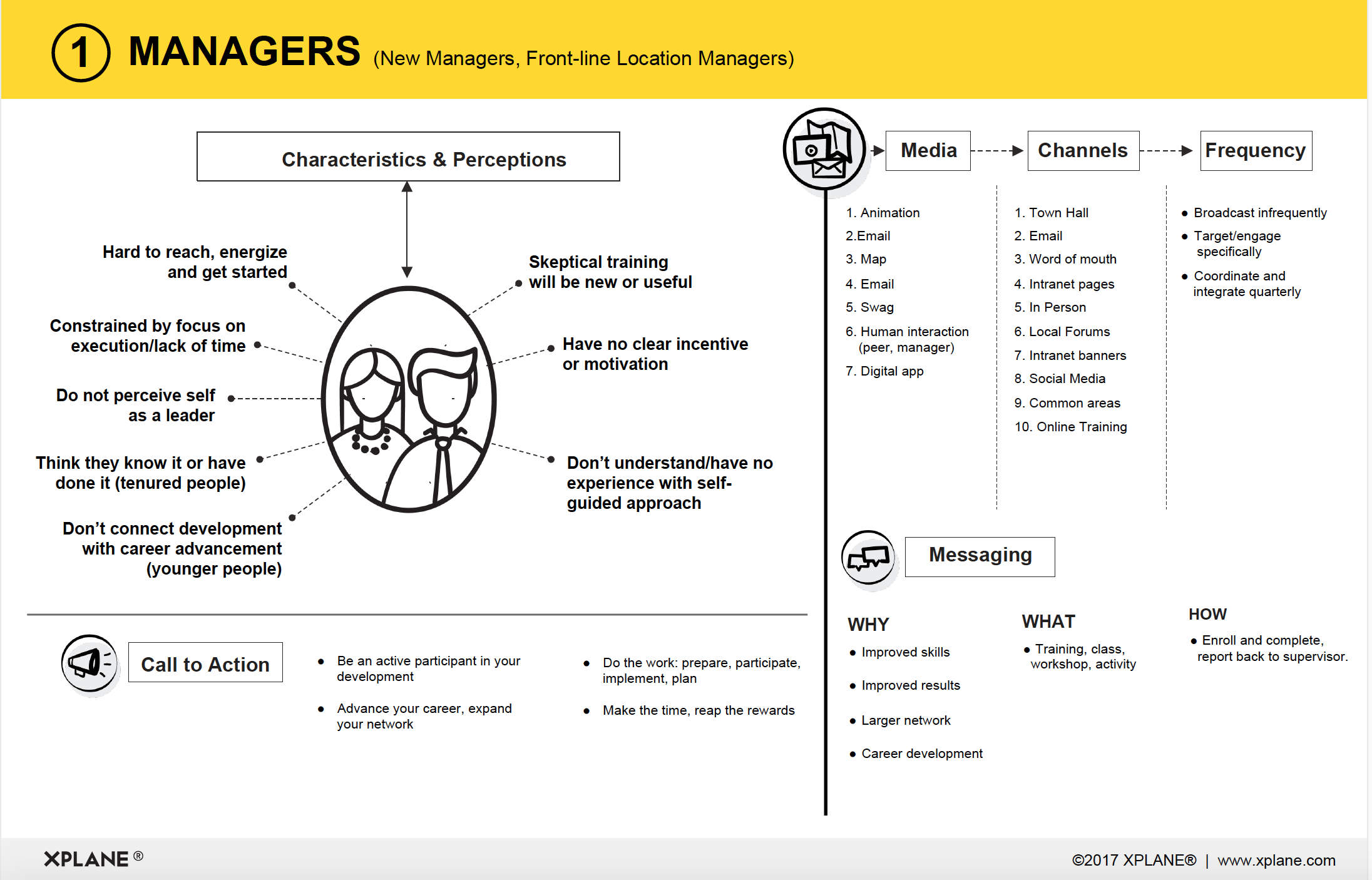![]()
This article was written by Jacob O’Brien, Lauren Gantner, and Sara Mesing.
Your organization is made up of humans with different motives, different methods of communication, and different levels of understanding around your goals. If you want to make a large change in your business strategy, internal processes, or company culture, it’s vital that your employees deeply understand their part in the new way of working. One-way communication from the top down falls flat. People need communication tailored for outlining what they need to know and what’s in it for them.
Most organizations are savvy enough to identify how a change in process, strategy, or culture will benefit their employees. Staff often hear the same refrain reinforcing the change message and its benefits to employees in quarterly all-hands meetings.
This is a good start. However, it’s often not enough when you need to see enterprise-wide results fast. How do you take your change efforts to the next level?
That’s exactly the question that a global financial services company with 200K+ employees asked XPLANE. They were looking for a method to jumpstart change communications and reduce the time to execution.
The solution, in this case, is a tool for change leaders to build next-level engagement across the organization. The tool, which we called an “Engagement Canvas” and is available for download below, offers a rigorous template for thinking through the various employee groups who need to understand how the change will affect and benefit them as well as a means for sustaining the change conversation over time. Thus the Engagement Canvas provides a scalable and repeatable process for taking your internal change communication to the next level.
Our finance services client used this tool to socialize their findings with change leaders in a selected leadership program. Their goal was to communicate the value of the leadership program and why it’s important to be involved.
Here is the breakdown of how we use it:
- Conduct Interviews To understand your people, you need to hear their feedback in their own words. Use this template as a guide for the conversation with different audiences within your company. Different audiences are segmented by different levels, departments, or locations within the organization. Try to understand how they work by listening to what they’re thinking, what they already know and understand about the upcoming change, and what kind of communication methods are most effective for them.
- Synthesize the Audience’s Characteristics Group similar job titles and functions together and start building your canvases. Create as many as you need — number them, change audience title, and compile similar details that define this group of people. Note any overarching characteristics you find out about the audience group through your interviews, including gaps in knowledge they may have, perceptions they have about the company and changes coming, or any beliefs they have about their role. Much like an empathy map, pulling together this information gives you a deeper understanding of how to communicate with different layers of the company and what they need to know to be successful in the upcoming change.
- Break Down the Communication What type of media works best? Through what channel? And how often? Figure out what works best for each audience, including how to deliver your message, how often, and at what level of elevation your content should be (high-level vs. a very specific and tactical level). Is there an event or milestone with which the message should be delivered? A campaign? A fiscal quarter?
- Create a Call-to-Action What do you need them to do? Whether you need the employees to participate or you need their managers to encourage their employees to participate, create a unique call to action for each audience group that breaks down the actions they need to take and the information they need to know about the change based on their characteristics and perceptions. Be sure to keep it simple: limit it to no more than four very specific things on which you want the audience to take action.
- Craft the Message What you need the audience to do (the call to action) will inform what your message needs to be. Focusing on what you need from this audience, make sure your messaging answers the why, what, and how questions: Why is this change important to this audience? Why should they care? What do they need to know and understand to be successful? How is it going to be implemented? How does this affect their current role?
- Validate Socialize and share these findings on the Audience Engagement Canvas with your team. Talk through your synthesis and validate your approach and any changes that you need to move forward. Pro Tip: Upload the PowerPoint to Google Drives—when you share it with your team, you all can contribute, comment, and edit at the same time no matter where you are in the world.
Ready to get started?Look at our sample, download the canvas, and give it a try with your teams. |
